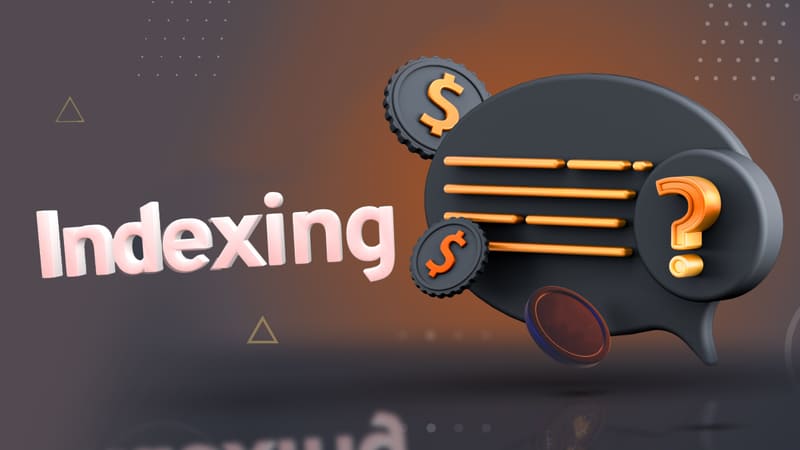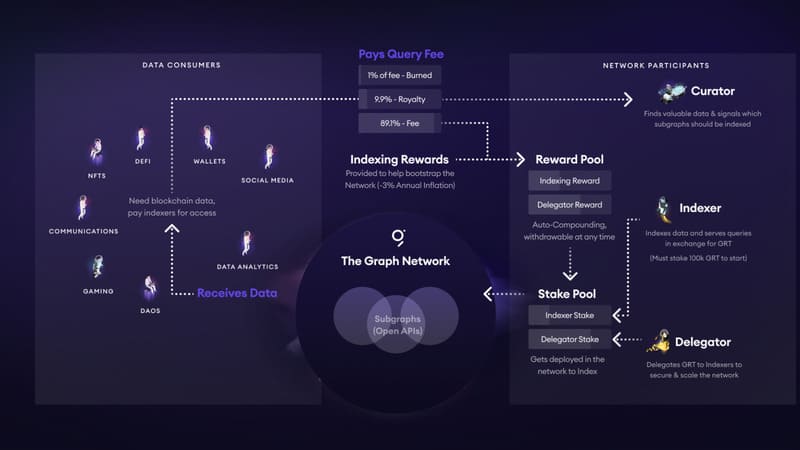In the blockchain ecosystem, decentralized applications (dApps) rely on interacting with the data stored on the blockchain to function properly. However, the process of querying this data is far from straightforward. The decentralized structure and vast amount of blockchain data make it difficult to retrieve efficiently. What is Indexing, then? It’s a critical tool that addresses these challenges, simplifying access to blockchain data for dApps.
Understanding indexing and the Challenges of Querying Blockchain Data
Indexing, specifically “blockchain data indexing,” involves creating a specialized database derived from the vast and complex data stored on a blockchain. This process entails structuring and organizing blockchain data in a way that makes it more accessible and manageable.
Blockchain functions as a decentralized network where data is distributed across numerous nodes, rather than being stored in a single centralized location. This distribution enhances security and resilience but also introduces challenges for data retrieval. Accessing data directly from the blockchain involves querying each node individually, which can be time-consuming and resource-intensive due to the sheer volume of data and the need to process complex transactions.
Indexing addresses these challenges by creating a more efficient, secondary representation of the blockchain’s data. Through indexing, a streamlined and optimized version of the data is maintained in a separate database. This indexed database is designed to facilitate rapid and straightforward data retrieval. By organizing and categorizing the data into a structured format, indexing significantly reduces the time and computational resources required for querying. As a result, dApps can access the information they need quickly and efficiently, without the delays and overhead associated with querying the entire blockchain directly.
Challenges in Querying Blockchain Data
- Decentralized Data: While decentralization enhances security and transparency, it also complicates data retrieval since data is scattered across various nodes rather than centralized.
- Lack of Effective Query Languages: Unlike centralized databases that use SQL for queries, decentralized blockchain databases lack a standardized query language, making data retrieval more challenging.
- Limited API Capabilities: Current APIs often struggle to handle complex data queries efficiently.
In essence, data indexing works like a table of contents in a massive book. Without it, finding specific information would involve painstakingly sifting through countless pages. But with a well-structured index, pinpointing the exact information you need becomes quick and effortless.
How Data Indexing Platforms Work
- Data Extraction: The process begins by extracting and storing data from the underlying blockchain into a new database. This data may include transaction details, smart contract addresses, and more.
- Data Indexing: Common indexing methods include tracking token and NFT transactions, wallet balances, smart contract activities, and more.
- API Provisioning: Once indexed, the data is made accessible to dApps via APIs provided by the indexing platform.
- Simplified Data Access: dApps can then easily access this secondary database rather than querying the blockchain directly.
Although blockchain is highly effective in terms of decentralization, security, and transparency, it falls short when it comes to easy data retrieval. As a result, dApp developers frequently turn to third-party indexing services to efficiently query data.
Leading Indexing Projects in the Market
The Graph provides Subgraph, an open API that enables dApp developers to efficiently query data from blockchains such as Ethereum. The Graph’s ecosystem is built on three core roles: Indexers (node operators responsible for indexing and processing queries), Curators (who identify and signal valuable subgraphs), and Delegators (who delegate GRT tokens to Indexers, supporting the network’s operation).
Subquery Network is a leading project that primarily focuses on supporting the Polkadot ecosystem. It offers powerful tools, such as SubQuery’s SDK and SubQuery Explorer, enabling developers to create and manage data indexes. Similar to The Graph, Subquery Network operates with essential roles like RPC Providers, Data Indexers, and Delegators, ensuring efficient data indexing and accessibility across the network.
This article has offered a comprehensive overview of what indexing is in the context of blockchain data and has spotlighted some of the key projects in the space. Indexing plays a vital role as a foundational infrastructure for the expansion of dApps within the crypto market. Moreover, it opens up opportunities for individual users to participate in indexing protocols and earn service fees. Thank you for your interest in Blockchain Bulletin Weekly.

